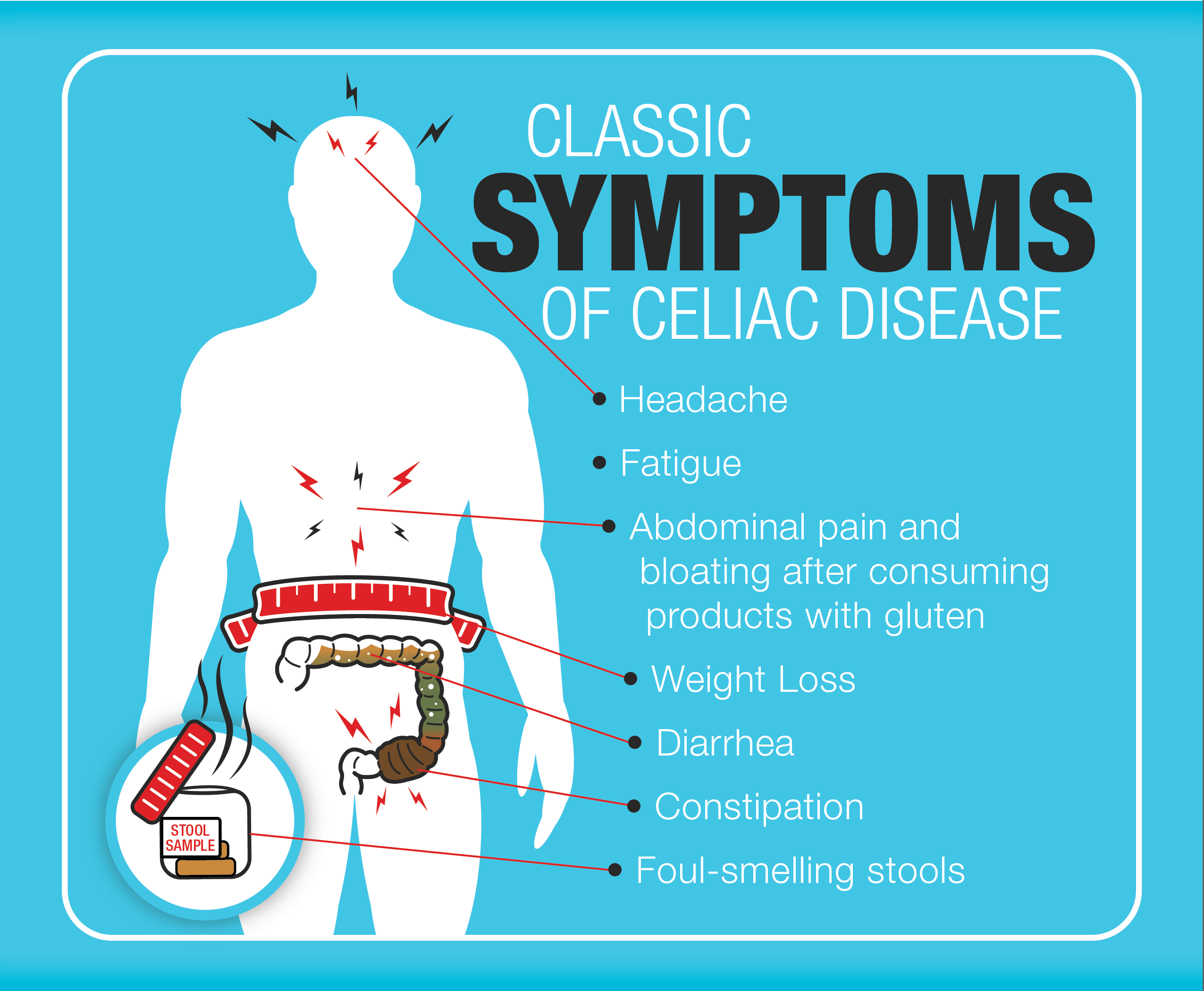This article will comprehensively cover all aspects of living without gluten, including the challenges faced by those with celiac disease, psychological adjustments, social aspects, and key recommendations to ensure that a gluten-free diet is effective.
Celiac disease is an autoimmune disorder in which the body's immune system mistakenly attacks the lining of the small intestine when gluten—a protein found in wheat, rye, and barley—is consumed. This results in inflammation, damage to the intestinal lining, and can cause malabsorption—the inability to properly absorb nutrients, vitamins, and minerals. These consequences lead to various health problems, ranging from mild digestive issues to serious conditions like anemia, osteoporosis, and even certain types of cancer.
Primary symptoms
Celiac disease can manifest through a wide range of symptoms, which vary greatly among individuals, and include:
Diagnosing celiac disease is often challenging because its symptoms can resemble other conditions, such as irritable bowel syndrome (IBS), chronic fatigue syndrome, or various autoimmune diseases. Diagnosis is usually made through blood tests and a biopsy of the small intestine to detect antibodies against gluten proteins and assess damage to the intestinal lining.
A gluten-free diet is essential for everyone with celiac disease. Gluten is a protein naturally found in wheat, barley, and rye, so the first step is to completely remove these grains and their products from the diet.
Grains and foods containing gluten
Hidden sources of gluten
Gluten can be found not only in grains but also in various processed foods that may be contaminated or that contain added wheat-based products:

Fortunately, there are many naturally gluten-free foods that are safe for those with celiac disease and can help maintain a balanced diet while avoiding nutrient deficiencies.
Naturally gluten-free foods
Gluten-Free flours
Living without gluten doesn’t mean you have to give up baking. There are plenty of alternative flours available:
Cross-contamination is a serious issue for people with celiac disease, as even the smallest amount of gluten can trigger health problems. Cross-contamination occurs when gluten-free food comes into contact with gluten-containing products, such as sharing the same table or kitchen utensils. Here are some recommendations for minimizing the risk of cross-contamination:
At home
Use separate kitchen tools (e.g., knives, cutting boards, pans) for gluten-free foods.
Clean surfaces thoroughly, especially when using shared workspaces.
Toast gluten-free bread in a separate toaster or use special baking parchment.
Eating Out
Always inform restaurant staff about your dietary requirements. Be sure they understand that even a small amount of gluten can pose a health risk.
Choose restaurants that offer special gluten-free diets or those that have gluten-free menus.
When traveling, bring gluten-free snacks with you in case you can't find safe food options.
When people switch to a gluten-free diet, they often face nutritional deficiencies, as eliminating gluten-containing products can limit food variety and reduce nutrient intake. Also, gluten-free processed products tend to be less nutritious because they may lack fiber, iron, and B vitamins.
Key nutrients to ensure in your diet
Adapting to a gluten-free lifestyle can lead to psychological challenges. Changing habits, learning to avoid gluten, and coping with social changes can be emotionally exhausting.
Living with celiac disease often brings emotional discomfort due to constant restrictions, fear of accidental gluten exposure, and social isolation. Some people may experience anxiety or depression over maintaining the diet and the possibility of falling ill unexpectedly.
Psychological support, whether individual or through groups, can help manage these feelings. Therapy or counseling can provide tools to cope with stress and anxiety.
Living with celiac disease can affect social life. Eating out, attending parties, or traveling can become challenging due to limited food choices. It's important to learn how to communicate your needs effectively. Don't be afraid to inform friends, family, or colleagues about your condition and necessary dietary restrictions.
Community and support groups can also be beneficial. They provide an opportunity to share experiences, advice, and resources with others facing the same challenges.

In recent years, the gluten-free diet has gained popularity not only among those with celiac disease but also among people seeking a healthier lifestyle. However, this dietary approach is not always beneficial for those without celiac disease or gluten intolerance. Some people choose gluten-free products for weight loss or general health improvement, even though there is no scientific evidence that gluten avoidance benefits people without celiac disease.
It’s important to understand that a gluten-free diet is medically necessary only for those diagnosed with celiac disease or confirmed gluten intolerance. For others, it may not only be unnecessary but could also limit the intake of important nutrients.
Living gluten-free with celiac disease requires constant attention to food, product ingredients, and social situations. While it may be a challenging and sometimes difficult process, by strictly following the diet and acquiring the necessary knowledge, people with celiac disease can lead a full life without gluten and avoid long-term health complications. The expanding gluten-free product market and increasing public awareness help ensure that managing this disease becomes easier.
# celiakija # glitimas